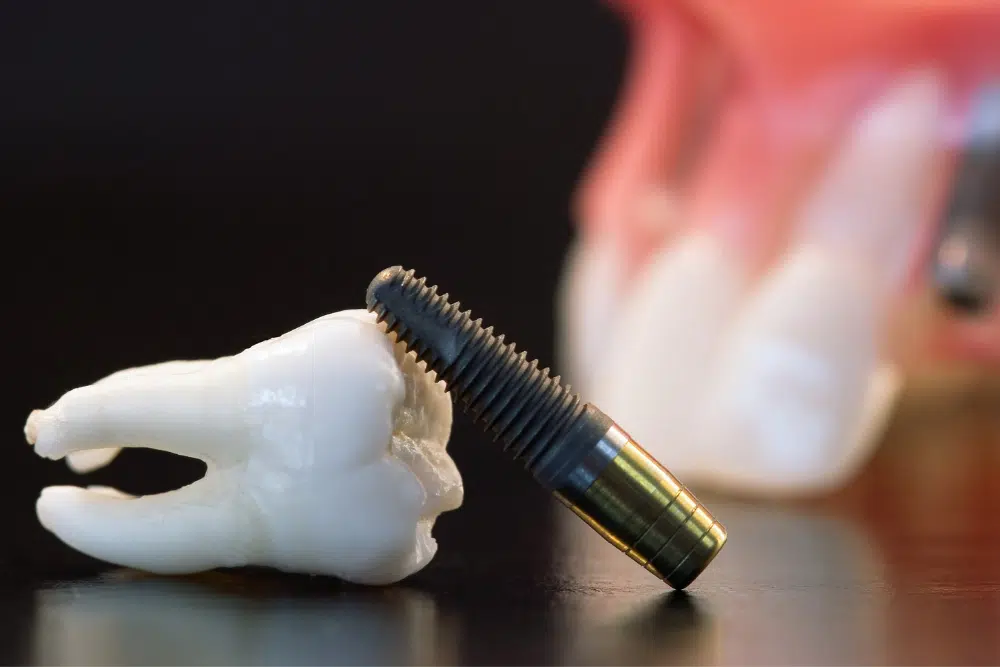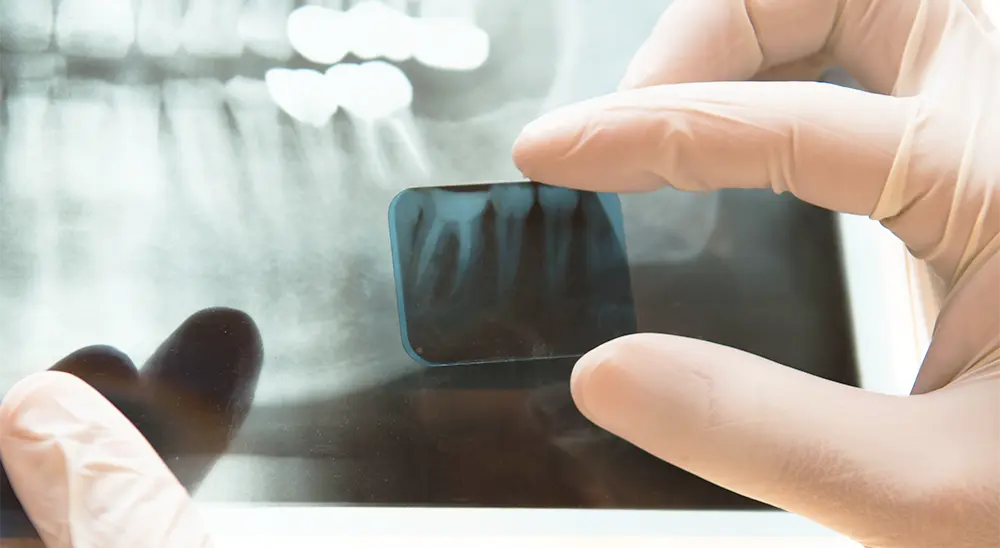
Dental implants
How do they stay in the bone?
Every year more and more people benefit from the procedure of placing dental implants. Unlike other alternatives to replacing missing teeth, dental implants are the most long-term solution. But how do dental implants stay in place? This is exactly what we are talking about in our new blog article. Enjoy reading!
What are dental implants?
Dental implants are small metal products made of different materials, mainly titanium and zirconium, that replace the root of the tooth. There are generally two types of dental implants, two-part (classic) and one-part (basal and compression).
They are placed surgically, directly in the jawbone by a dentist – implatologist. Once placed, dental implants are osseointegrated (fused) with the bone and “fixed” permanently, preventing them from falling or shaking.
When placed correctly, according to the protocol, by a dentist with the right set of skills and experience, dental implants can serve the patient for a lifetime.
What is the process of osseointegration of dental implants?
Dental implants are designed to replace the missing tooth root. Different types of dental implants are placed in different parts of the bone. For example, classic implants are placed in the spongy (more porous bone) and basal implants in the cortical (harder bone).
As soon as the dental implants are placed in the bone, the process of osseointegration begins. Osteointegration is an anatomical process that facilitates the “fusion” or direct connection between the bone and the implant. Typically, complete osseointegration occurs over a period of six weeks to six months, depending on the location of the implants and the health of the jawbone. During this time, temporary teeth can be placed. Once the implants are fully integrated, the permanent crowns are fixed.
On what does the success of the average osseointegration depend?
The success of the osseointegration process depends on the general health of the patient, so in the first place, it is important that he is a suitable candidate for dental implant treatment. An objective assessment can be made after careful planning and preparation of an appropriate treatment plan by the attending physician.
Successful retention of dental implants in the bone depends on other important factors such as:
– The type of dental implants –
Different implant systems also have a different protocol that directly determines the duration of the osseointegration process.
– The type of materials for making dental implants –
In experiments on the effect of materials on bone integration, it was found that it is most appropriate to use titanium dental implants.
Also, materials can cause inflammatory processes if they are not biocompatible with the human body, which can interfere with the good osseointegration of implants.
– The quality of the bone –
Not only the initial and subsequent stability of the dental implant but also the bone regeneration depends on the quality of the bone. The more bone cells there are, the better they connect to the surface of the implant.
– Use of tobacco products –
Smoking limits the process of osseointegration and increases the risk that the implants will not fuse properly with the bone after placement. Nicotine directly affects blood flow and bone cell growth, two factors that are essential for osseointegration.
– The design of dental implants –
Manufacturers of quality dental implants rely heavily on the design with which they design them. The more compatible the design is with the anatomy of the human bone, the greater the chance of successful osseointegration of the dental implant.
Are you about to have implant treatment? Contact us for a free consultation through our contact form.








